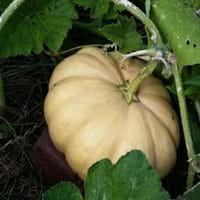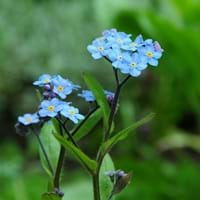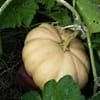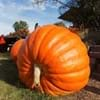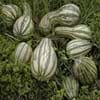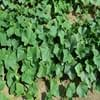Life Span
Annual and Perennial
Annual and Perennial
Type
Vegetable, Vines
Flowering Plants, Shrubs
Origin
North America, Mexico, Central America
Eastern Asia
Types
Winter squash, Field pumpkin, Crookneck pumpkin
Bigleaf hydrangea, Hortensia, Smooth hydrangea, Oakleaf hydrangea, Annabelle
Number of Varieties
Not Available
Habitat
close to waterfalls, Riverbanks, Warmer regions, waterways, Wet ground
Fields, gardens, meadows, rocky outcrops, waste ground, yards
USDA Hardiness Zone
1-6
Not Available
Sunset Zone
A1, A2, A3, H1, H2, 1a, 1b, 2a, 2b, 3a, 3b, 4, 5, 6, 7, 8, 9, 10, 11, 12, 13, 14, 15, 16, 17, 18, 19, 20, 21, 22, 23, 24
21,22
Habit
Vining/Climbing
Clump-Forming
Flower Color
Yellow
Blue, White
Flower Color Modifier
Bicolor
Bicolor
Fruit Color
Orange Red, Yellow Brown
Not Available
Leaf Color in Spring
Green, Light Green
Green, Gray Green
Leaf Color in Summer
Green, Dark Green
Green, Gray Green
Leaf Color in Fall
Green, Dark Green
Green, Gray Green
Leaf Color in Winter
Not Available
Light Green
Leaf Shape
Heart-shaped
Lanceolate
Plant Season
Early Winter
Spring, Summer
Sunlight
Full Sun
Full Sun, Partial Sun
Growth Rate
Very Fast
Fast
Type of Soil
Well drained
Loam
The pH of Soil
Neutral
Acidic, Neutral
Soil Drainage
Well drained
Well drained
Bloom Time
Summer
Early Spring, Spring, Late Spring, Early Summer, Summer, Late Summer
Tolerances
Drought
Not Available
Where to Plant?
Ground
Ground
How to Plant?
Seedlings
Divison, Seedlings
Plant Maintenance
Medium
Medium
Watering Requirements
Keep the ground moist but not water-logged, Requires regular watering, Requires watering in the growing season
Do Not over Water
In Summer
Lots of watering
Lots of watering
In Spring
Moderate
Moderate
In Winter
Average Water
Average Water
Soil pH
Neutral
Acidic, Neutral
Soil Drainage Capacity
Well drained
Well drained
Sun Exposure
Full Sun
Full Sun, Partial Sun
Pruning
prune leaves so as to circulate fresh air, Remove Vines
Remove damaged leaves, Remove dead branches, Remove dead leaves
Fertilizers
Apply 5-10-5 amounts, Nitrogen, Phosphorous, Potassium
All-Purpose Liquid Fertilizer
Pests and Diseases
Gray leaf blight, Scab
Red blotch
Plant Tolerance
Salt and Soil Compaction
Drought
Flower Petal Number
Single
Single
Foliage Texture
Coarse
Medium
Foliage Sheen
Matte
Matte
Attracts
Beetles, Bugs
Bees, Flies
Allergy
Asthma, breathing problems, Itchiness, Swelling in the face
Chest tightness, Diarrhea, Dizziness, Nausea, Vomiting
Aesthetic Uses
Not Used For Aesthetic Purpose
Beautification, Cottage Garden, Ground Cover, Showy Purposes
Beauty Benefits
Good for skin and hair, Skin cleanser, Skin Problems
Not Available
Environmental Uses
Air purification
Air purification
Medicinal Uses
Anemia, Antibacterial, anti-cancer, cholesterol-lowering, High blood pressure, Immunity, Prevention of convulsion, Regulates Blood Sugar
Fever, Kidney problems, Urinary tract problems
Part of Plant Used
Fruits, Leaves, Seeds
Flowers, Root
Other Uses
Used As Food, Used as Ornamental plant, Used for its medicinal properties, Used in salads
Culinary use, Used as Ornamental plant
Used As Indoor Plant
Yes
No
Used As Outdoor Plant
Yes
Yes
Garden Design
Edible, Herb / Vegetable, Vine
Bedding Plant, Cottage garden, Edible, Hanging Basket, Wildflower
Botanical Name
CUCURBITA moschata 'Long Island Cheese'
Myosotis arvensis
Common Name
Long Island Cheese Pumpkin, Winter Pumpkin
Forget-Me-Not
In Hindi
चीनी कद्दू
Forget-Me-Not
In German
chinesisch Kürbis
Forget-Me-Not
In French
potiron chinois
Forget-Me-Not
In Spanish
calabaza china
Arce japonés
In Greek
κινέζικο κολοκύθα
Forget-Me-Not
In Portuguese
abóbora chinês
Forget-Me-Not
In Polish
Chiński dyni
Forget-Me-Not
In Latin
Chinese cucurbita
Forget-Me-Not
Phylum
Magnoliophyta
Magnoliophyta
Class
Magnoliopsida
Magnoliopsida
Family
Cucurbitaceae
Boraginaceae
Clade
Angiosperms, Eudicots, Rosids
Not Available
Tribe
Cucurbiteae
Not Available
Subfamily
Cucurbitoideae
Not Available
Importance of Cheese Pumpkin and Field Forget Me Not
Want to have the most appropriate plant for your garden? You might want to know the importance of Cheese Pumpkin and Field Forget Me Not. Basically, these two plants vary in many aspects. Compare Cheese Pumpkin and Field Forget Me Not as they differ in many characteristics such as their life, care, benefits, facts, etc. Every gardener must at least have the slightest clue about the plants he wants to plant in his garden. Compare their benefits, which differ in many ways like facts and uses. The medicinal use of Cheese Pumpkin is Anemia, Antibacterial, anti-cancer, cholesterol-lowering, High blood pressure, Immunity, Prevention of convulsion and Regulates Blood Sugar whereas of Field Forget Me Not is Fever, Kidney problems and Urinary tract problems. Cheese Pumpkin has beauty benefits as follows: Good for skin and hair, Skin cleanser and Skin Problems while Field Forget Me Not has beauty benefits as follows: Good for skin and hair, Skin cleanser and Skin Problems.
Compare Facts of Cheese Pumpkin vs Field Forget Me Not
How to choose the best garden plant for your garden depending upon its facts? Here garden plant comparison will help you to solve this query. Compare the facts of Cheese Pumpkin vs Field Forget Me Not and know which one to choose. As garden plants have benefits and other uses, allergy is also a major drawback of plants for some people. Allergic reactions of Cheese Pumpkin are Asthma, breathing problems, Itchiness and Swelling in the face whereas of Field Forget Me Not have Chest tightness, Diarrhea, Dizziness, Nausea and Vomiting respectively. Having a fruit bearing plant in your garden can be a plus point of your garden. Cheese Pumpkin has showy fruits and Field Forget Me Not has no showy fruits. Also Cheese Pumpkin is not flowering and Field Forget Me Not is not flowering . You can compare Cheese Pumpkin and Field Forget Me Not facts and facts of other plants too.
